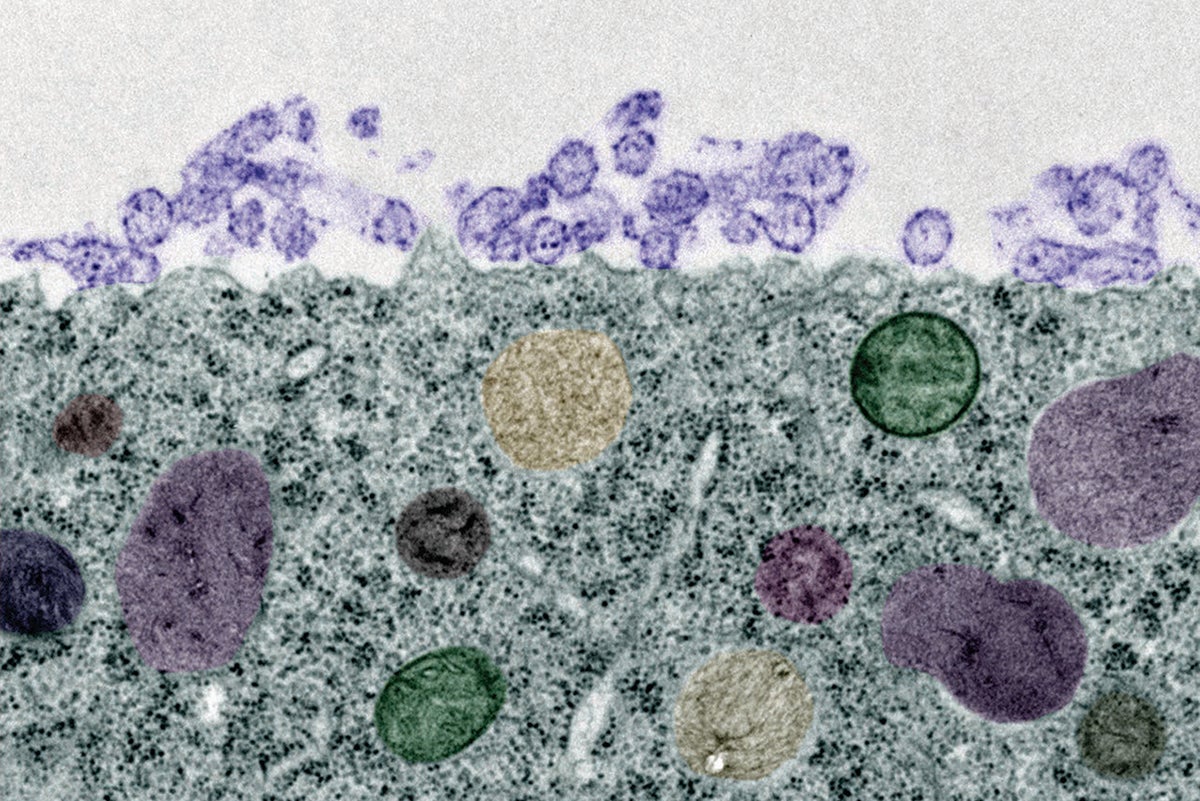DU’s Allen Distinguished Investigator Conducts Breakthrough Research on Brain Function
When neurons lose their shape, impaired brain function or neurodegeneration can result.
Ann Wehman, Assistant Professor of Molecular and Cellular Biophysics at the University of Denver’s College of Natural Sciences and Mathematics, has begun looking into how the shape of neurons is maintained in adults. Wehman collaborates on this project with Andrew Chisholm, Distinguished Professor of Neurobiology and Cell and Developmental Biology at the University of California San Diego. Wehman and Chisholm were among 18 researchers to receive more than $10 million in funding from the Paul G. Allen Family Foundation.
As newly named Allen Distinguished Investigators, Wehman and Chisholm will receive $1.5 million to probe the role of extracellular vesicles (EVs) in the maintenance of neuronal circuitry. EVs are membrane-enclosed structures—loaded with proteins, nucleic acids, lipids and other biomolecules—that can remodel the shape and content of a cell. After being released into the extracellular environment, EVs can also be delivered to recipient cells and cause physiological or pathological changes.
“We know that all types of cells can release these kinds of vesicles,” Wehman says. “That means bacteria, that means neurons in the brain, and anything in between.” Scientists also know that EVs can change in response to stress and other conditions that affect cells. But much remains unknown.
Four projects were awarded for proposals in the field of extracellular vesicles and three others researching sex hormones. When considering funding areas, the Paul G. Allen Frontiers Group looks for emerging fields where an investment could catalyze scientific progress for awardees and all others in their fields.
“This is a very exciting collaboration between our two labs because we came at this problem from different angles,” Chisholm says.
While working with C. elegans, a worm species widely used in scientific research, Chisholm learned that the genes and proteins regulating EV production have a role in the nervous system. When neurons generate too many EVs, they lose their shape. But by mutating certain genes, he found versions of those proteins that cause neurons to reduce EV release and regain their normal shape.
Wehman, meanwhile, had established the function of those same genes and proteins and linked them to EVs. Her experiments in the early development of C. elegans embryos showed how disrupting certain membrane proteins causes an increase in EV release. Cellular membranes are asymmetric in their content; they hold different types of lipids on each side. But membranes can lose this asymmetry.
“Losing lipid asymmetry can cause a lot of different things to happen. But the particular lipid we look at causes extracellular vesicle release when it becomes symmetric,” Wehman says.
Chisholm and Wehman now hope to learn how neurons maintain the shape of their cells throughout life, including how cells regulate the number of vesicles they make and where they make them. The duo will continue to conduct tests using C. elegans. The species is transparent, meaning that it lends itself to fluorescent microscopy for physiological studies.
The worms also have a much smaller genome than humans. Where humans may have a few different versions of a gene, C. elegans will usually have only one, simplifying genetic testing. C. elegans has also evolved to generate offspring instead of living a long life. “This is great for genetics because a single worm has hundreds of progeny,” Wehman notes.
One goal of the grant is to develop a genetically encoded sensor that will enable the researchers to observe EV dynamics in C. elegans. Specifically, they would like to find out if a lipid called PE (phosphatidylethanolamine) operates from the surface of a cell or within its underlying membrane. As for many lipids, no such sensor exists. Wehman’s previous research showed that PE distribution in cell membranes drives membrane budding to form EVs.
“We want new tools to look at the lipid distribution, which tells us about things that control EV release,” Chisholm says. “If we can develop a sensor for this PE lipid in a live animal or even just a halfway version of it, that would be a big advance. It’s something that doesn’t exist right now, so it’s a high-risk endeavor.”
In the long term, Wehman and Chisholm’s basic research has potential implications for brain health. “EVs are popular now as a potential method of drug delivery,” Wehman notes. If pharmaceutical companies could control how many EVs a cell makes, they could improve the efficiency of the bioreactor processes that they use to develop new drug formulations.
EVs can also serve as biomarkers for non-invasive medical testing in patients. But tuning EV levels in patients as a disease treatment remains impractical without a fuller understanding of the many functions that EVs perform in animals, questions that Wehman and Chisholm look forward to exploring.








